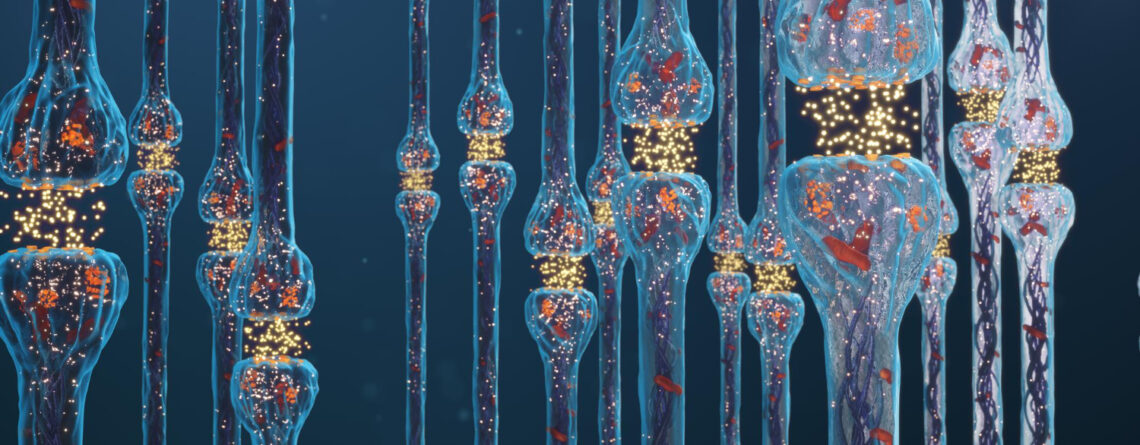Tumors of spinal cord and spine are serious oncological diseases that can lead to permanent loss of important body functions, disability development and even death. They can be both malignant and benign, but both are dangerous to health.
If such a disease is suspected or detected, you should contact a doctor with high qualifications and relevant experience in such patients management. Such specialists work in Adult Oncology Department of Maimonides Multidisciplinary Medical Center. Our department works in close and fruitful cooperation with the best Israeli oncology centers.

The adult oncology project is headed by Dr. Stefanska Iryna. Together with the responsible specialist from the Israeli side, she supervises each clinical case. If necessary, treating oncologist can always get advice from his highly qualified colleagues, discuss all examination details and treatment regimen. Also, if it is necessary, even get an online consultation for his patient. Thus, in Ukrainian conditions, you can get access to all advantages of modern Israeli medicine.
It is no secret that oncological diseases treatment, particularly malignant ones, is a rather expensive process. We took care of those patients who cannot afford modern therapy financially. Our medical institution works under the patronage of “Keren Or for our Child” the Charitable Foundation, which provides assistance for seriously ill patients treatment.
Spinal cord and spinal column tumors are quite complicated diseases. A multidisciplinary team should work on helping a patient with such diagnosis. All necessary specialists work in Oncology Department of Maimonides Medical Center - oncologists, neurologists, neurosurgeons, vertebrologists, orthopedists, rehabilitation specialists, radiation therapists, chemotherapists, physical therapists and others. In their work all our doctors are guided by modern treatment protocols of oncological pathologies, and not by old domestic methodical recommendations. At the same time, the approach to each patient is not templated, but purely individual . Making up an examination and treatment plan, our doctor takes into account age, type of tumor, its location and size, stage of the disease, concomitant diseases presence, and patient’s wishes regarding the treatment and diagnostic process. Such a patient-oriented approach significantly increases recovery chances and improves the long-term prognosis in each case.
In Oncology Department Maimonides Medical Center, only highly qualified specialists provide medical care, most of whom have repeatedly completed internships at the best Israeli and foreign oncology clinics. In their work, they use only modern diagnostic and treatment equipment, which is completely safe for patient, masterfully posses all necessary diagnostic procedures, as well as therapeutic manipulations and the most complex surgical interventions techniques. If certain innovative equipment or a narrow specialist is not available, the patient is directed to the nearest affiliated Maimonides medical centers or our Israeli partner clinics, where he will definitely receive the entire necessary range of the most modern medical services.
Types of spinal cord tumors
Like other oncological neoplasms, spinal cord and spine tumors are divided into benign and malignant, primary and secondary (metastatic). Also, all tumors of the spinal cord are divided into 2 large groups:
- Intramedullary tumors are tumors that grow in parenchyma thickness (substance) of spinal cord. They are able to spread upwards and/or downwards to several spinal cord segments. As they grow, they destroy spinal cord tissue, block normal circulation of cerebrospinal fluid, which leads to corresponding symptoms development. The most common types of intramedullary tumors are gliomas, ependymomas, and astrocytomas.
- Extramedullary tumors are tumors that do not penetrate directly into spinal cord parenchyma, but grow outward from it. Depending on location inside or outside the dura mater, they are divided into intradural (inside the dura mater, but on the surface of the spinal cord) and extradural (located outside the dura mater). Most intradural neoplasms are benign. Following types of tumors are most often found among them - meningiomas, neurofibromas. Most extradural tumors have a malignant metastatic nature: they arise from carcinomas of lungs, breast, prostate, kidneys, thyroid gland or as lymphomas.
Intradural and extradural tumors do not destroy spinal cord substance, but they lead to compression (squeezing) of spinal cord or its roots at a certain level. It causes neurological disorders in these neoplasms. Most extradural metastatic tumors first grow into bone tissue of certain vertebrae, and only then cause nerve structures.
Most often, we have to deal with the following types of spinal cord and spine tumors:
- Astrocytoma is an initially benign tumor that can transform into a malignant one as it grows, so it requires active treatment tactics. It develops from spinal cord nerve cells – astrocytes. Astrocytoma is an intramedullary tumor that leads to direct organ parenchyma destruction.
- Hemangioma and hemangioblastoma are benign and malignant tumors that develop from blood vessels. It often affects vertebrae body, leading to their pathological fractures and other negative consequences.
- Spinal cord cavernoma is a type of vascular malformation that forms in different parts of brain and spinal cord. These tumors are usually clearly separated from surrounding tissues and are a collection of vascular cavities various sizes and shapes containing blood breakdown products. This is a benign neoplasm.
- Spinal cord and spine cysts are benign neoplasms, the cavities of which are filled with fluid. The most common types are dermoid and epidermoid cysts, tumor-associated cysts.
- Spinal cord medulloblastoma is a malignant neoplasm that develops from embryonic immature cells.
- Meningioma is an intradural neoplasm that grows slowly and manifests as spinal cord compression or its roots progresses. The thoracic region is most often affected.
- Neuroma. This extramedullary benign malformation, growing from Schwann cells, can affect any nerve roots of spinal cord. Symptoms develop slowly and are mainly caused certain nerve structures compression (radicular syndrome).
- Spinal cord and spine oligodendroglioma is oligodendrocyte nerve cells benign tumor. This neoplasm has a malignant potential, grows quickly, reaches significant sizes, therefore, when detected, it requires active treatment.
- Glioblastoma multiforme is a malignant neoplasm of spinal cord that grows from glial cells.
- Ependymoma. It belongs to intramedullary malformations group. Most often it affects lumbar and sacral spinal cord regions, which is clinically manifested by cauda equina syndrome symptoms.
- Spinal cord secondary (metastatic) tumors. Most of these tumors are extradural (located outside the dura mater). Spinal cord metastatic damage most often occurs when patient has malignant tumors of kidneys, thyroid gland, and lungs.

Spinal cord and spine tumors symptoms
Pain is an early symptom of spinal cord and spine tumors, especially with extradural neoplasms. It progresses, does not depend on physical activity and worsens when lying down. The pain can be localized in back and/or spread in dermatome area (radicular pain).
Certain neurological disorders indicate damage to spinal cord specific part. For example, a patient may experience spastic weakness, urinary incontinence, and dysfunction of some or all sensory pathways of spinal cord certain level and below. Violations usually occur on both sides.
Some patients with intradural tumors, most often meningiomas and neurofibromas, have impaired sensitivity of lower extremities distal parts, segmental neurological disorders,spinal cord compression symptoms, or their combination.
Esophagus malignant lesions symptoms symptoms can rapidly worsen and lead to paraplegia and loss of bowel and bladder control.
Root syndrome also often develops. It includes:pain and paresthesias, accompanied by sensitivity loss, muscle weakness and, if the root is compressed for a long time,certain muscle groups atrophy.
Diagnosis methods of spinal cord and spine tumors
The importance of modern and accurate diagnostics cannot be overestimated. The success of treatment program and prognosis directly depend on a timely and correct diagnosis . Our specialists master all modern patients examining methods with suspected spinal cord tumors. And thanks to innovative diagnostic equipment of expert class, examination process is not only highly accurate and fast, but also completely safe and comfortable.
Diagnosis begins directly with oncologist consultation, specific complaints establishment, anamnesis of life and illness collection, thorough examination of organs and systems, complete neurological examination. Next, depending on what disease the doctor suspects, patient is referred to a number of additional diagnostic procedures:
- Various blood and urine tests.
- Spinal puncture and obtained cerebrospinal fluid sample examination.
- Ultrasound (color dopplerography).
- Various modern methods of pathological focus visualization – CT and MRI with or without contrast, MSCT, PET-CT, PET-MRI, myelography, digital radiography of spine. With their help, you can get a detailed image of neoplasm and surrounding healthy tissues, and it is possible to understand tumor size, its spread limits, make conclusions about which parts of spinal cord and spine are affected, plan the volume of future surgical intervention and even get 3D or 4D model of pathological focus.
- Neurophysiological methods of spinal cord function studying , for example, electromyography (EMG).
- Head, neck, spine vessels angiography.
- Neoplasm biopsy with followed pathomorphological examination to obtain an accurate histological diagnosis.

Neoplasm biopsy is a very important stage of modern diagnostics in clinical oncology. All tissue samples we receive are sent for revision to the best pathomorphological laboratories in Israel, the USA, and Germany. Thanks to such double checks, we are absolutely sure of diagnosis correctness and selected treatment scheme effectiveness.
Also, histological material is sent to modern global molecular laboratories for"molecular checks". With the help of innovative molecular genetic tests, it is possible to find certain features of malignant cells – mutations or a set of receptors on these changed cells surface. Thanks to such research, there is a possibility to create individual action drugs (personalized oncology). This is how targeted drugs and other immunobiological therapy drugs are made. They purposefully act only on malignant cells in body, and do not affect healthy surrounding cellular elements. One of such test system for molecular genetic testing is Foundation One panel and Caris Molecular Testing. All patients of our clinic have the opportunity to provide these modern diagnostic tests.
Other innovative diagnostic methods are also used at Maimonides Medical Center, their selection is a matter for the attending physician, depending on all patient’s characteristics and his disease. All necessary diagnostic procedures can be performed directly at Maimonides Medical Center without leaving Ukraine.

Modern treatment of spinal cord and spine tumors
Obtained results during the diagnosis will allow the doctor to choose an optimal treatment in each case, according to developed modern global protocols. All of them are derived from evidence-based medicine. Maimonides Medical Center specialists tactics choice is based on many factors: patient’s age, his state of health, tumor localization, its size and histological type. The treatment program is discussed and selected during consultation of an interdisciplinary specialists team: a neurologist, an oncologist, a neurosurgeon, as well as other specialists in various specializations (depending on patient's comorbidities).
In the vast majority of cases, spinal cord and spine tumors treatment is complex. It means that it is a combination of two or more standard or innovative (and sometimes experimental) treatment methods. As a rule, the main treatment method is surgical tumor removal, supplemented by radiation therapy and chemotherapy. In some patients, complex treatment does not use classical chemo meds, but modern immunobiological or targeted drugs. Thanks to such a complex approach to spinal cord and spine tumors treatment, almost every patient can achieve significant success – remission or complete recovery.
Undoubtedly, the main and radical spinal tumors treatment method is surgical intervention. The best spinal neurosurgeons work in our department. All surgeries are provided according to minimal invasiveness principle. This means that modern microsurgical procedure techniques are used without large incisions.
In the Department of Spinal Surgery, the latest minimally invasive interventions techniques and endoscopic surgeries on spine and spinal cord are used. Applicated intervertebral discs and substances implants of the latest generation that stimulate bone tissue fusion. Providing surgeries, we apply the most modern devices for spinal cord state and its functions monitoring, which is necessary for organ damage prevention during intervention. The latest intraoperative navigation system and computer tomography are also available for patients (O-Arm).
The doctors of our clinic specialize in the entire range of spine and spinal cord oncological surgeries. In particular, we provide the following innovative interventions:
- resection of the spinal cord in a single block (En block Resection);
- spinal cord tumors resection;
- radiosurgery – tumors non-contact removal by irradiation of a pathological focus under computer control, which makes it possible to concentrate the maximum dose of ionizing radiation in tumor area and at the same time minimize the negative radiation impact on surrounding healthy tissues.
The method of intervertebral discs laser vaporization is successfully applied in our medical center. Clinic has specially equipped operating rooms for patients suffering from vertebrae metastatic lesions. Highly professional spinal surgeons and stereotaxic instruments and navigation systems modern base help to relieve patients of their suffering in a short time.
n complex treatment, if necessary, complex treatment. is applied. It can be used before surgery to reduce neoplasm size for more effective removal. Also, radiation may be prescribed after patient's surgical treatment to reduce recurrence risk in future. Sometimes the modern intraoperative radiation therap procedure can be applied, where the area is irradiated after the tumor has been removed. This allows us to completely destroy all malignant cells that may have remained after tsurgery.
Also, radiation therapy can be remote, when the source of radiation is outside (modern devices for remote radiation therapy – linear accelerators). And can be contact, when radioactive material is placed in a capsule and implanted directly into the tumor (brachytherapy). The second method has significant advantages – ionizing radiation acts directly in pathological focus, while the negative impact on surrounding healthy tissues is minimal. It is associated with a small number of contact radiation therapy side effects.
The therapy scheme must be supplemented with modern chemotherapy protocols, targeted therapy and other immunobiological drugs. We use only modern and safe chemotherapy drugs from well-known global manufacturers to treat our patients. So we are sure of their effectiveness and minimal side effects.
Targeted and immunobiological drugs are actively used in patients with spinal cord malignant tumors. Especially in the late stages, when it is not possible to completely remove the tumor, and only one chemotherapy and radiation treatment is not enough for the patient. They purposefully act only on malignant cells, while not harming the surrounding healthy tissues, and this is their main advantage and difference from classical chemo meds.
Each of our patients has the opportunity to participate in clinical trials of experimental drugs or the latest surgical procedures absolutely free of charge. For many, this is the only chance to overcome the disease and regain health.
